American deck aircraft ARLO E-2C Hawkeye
Thanks to the passive detection system and the new E-2C radar, the Hawkeye is one of the most effective early warning and control aircraft in the world. It is second only to the larger and more complex Russian A-50 and American E-ZA. The E-2C is also equipped with more powerful T56-A-425 Allison engines with a power of 4910 hp each.
The squadron VAW-123, which was stationed at the coastal air base of the naval forces in Norfolk, became the first to receive the E-2C. The first aircraft carrier to receive the E-1974C in September 2 was the Saratoga.
E-2C aircraft in squadrons fleet gradually replaced the previous E-2B (in 1988, the last one was removed from service). During the production process, the on-board equipment of the aircraft was constantly improved, sometimes very seriously, but these improvements were not reflected in the designation of the machine. In December 1976, they began to install the AN / APS-125 radar station, which made it possible to detect 9 air targets from a height of 480 km at a distance of 800 km and direct fighters at 40 of them; the analog on-board computer was replaced by a digital one. In 1977-1984, on all built E-2S radars "120" were replaced by "125".
The E-2C Hawkeye aircraft is made according to the scheme of a twin-engine high-wing aircraft with engines placed on the wing.
The fuselage is a semi-monocoque, round cross-section, with a maximum diameter of 1981 mm. For its manufacture, aluminum alloys were used. The crew of the aircraft consists of 5 people: 2 pilots were in the cockpit in front of the fuselage, in the fuselage compartment - 3 system operators; the first operator monitors the work of the entire combat information post, the second one controls the interceptor aircraft, the third one is the operator of the radar station. The cockpit, compartments for operators and equipment are sealed. In the tail unpressurized part of the fuselage there are blocks of Doppler radar and control system wiring. A brake hook is mounted at the bottom of the fuselage.
Trapezoidal three-spar wing with positive V (3 degrees). The center section is fixed to the upper part of the fuselage, the internal volumes of the center section are used as integral fuel tanks. The outer parts of the wing (cantilever length 7,8 m) for easy storage on an aircraft carrier are removed with a rearward turn of 90 degrees. Folding is carried out with the help of hydraulic drives. Wing mechanization - hovering ailerons and Fowler flaps.
Behind the wing, above the fuselage, on a special lift lowered by 640 mm, a disk-shaped radar antenna radome with a diameter of 7320 mm was mounted. The antenna system includes a headlamp of an early warning radar, a rotation drive, an interrogator antenna of the identification system, and a data transmission antenna.
The stabilizer is located in the rear fuselage, has an 11-degree positive V. The stabilizer has pitch control rudders. The stabilizer has four puck-shaped keels. Extreme washers have rudders.
Tricycle landing gear with retractable nose strut. Two-wheeled nose support - in the fuselage, single-wheeled main racks - in the turboprop engine nacelles. In the tail section of the fuselage there is a lowered brake hook and a safety support.
The power plant is a pair of Allison T56-A-427 turboprop engines, each with a power of 3800 kW. The Aeroprodaks T-41 four-blade propellers had a diameter of 4,1 m.
The US Navy E-2C aircraft have standard camouflage: light gray side and top surfaces, white undersides.
The elements of the onboard radio-electronic complex are summarized in six main interconnected subsystems:
1. The detection subsystem is based on the ANA \ PS-145 three-coordinate radar station. The main difference of this radar from the previous modification is the possibility of long-range detection of surface and air targets against the background of any underlying surface. The station is capable of tracking up to 1200 targets simultaneously, 40 of which can be targeted by fighters.
2. The identification subsystem solves the tasks of identifying the state. aircraft accessories on the principle of "friend or foe" and also manages air traffic. It consists of an interrogator that provides work with all international identification standards, a signal processor and an interrogator antenna located in a radome along with a radar phased array.
3. The navigation subsystem determines the location, spatial position and speed of the carrier aircraft for georeferencing reconnaissance objects, as well as stabilizing the position of the radar station antenna.
4. The communication and data transmission subsystem provides communication between the E-2C task force and ground (ship) launchers and aircraft in the air.
5. The data processing subsystem performs functions similar to those assigned to a similar system of the E-3 aircraft.
6. The display and control subsystem includes three AN/UYQ-70 workstations, which are connected to a local network.
E-2C carrier-based AWACS aircraft, in addition to the squadrons of the first line, are armed with two reserve fleet aviation squadrons. In addition to the Navy, there are Hawkeyes in the Coast Guard and the Drug Enforcement Agency. The AWACS aircraft that use these services are leased from the navy. Typically, each service has two E-2Cs. Crews and cars change periodically.
In addition, the Hawkeye is employed by the civil air traffic control service to control the airspace near Cape Canaveral during launches of the Space Shuttle orbiters.
The E-2C "Hawkeye" was the first and only version of this aircraft to be exported. Six E-2Cs were acquired by Egypt, three by France, four by Israel, thirteen by Japan, four each by Singapore and Taiwan.
The first foreign customer for the E-2C Hawkeye was Israel, which bought four Group O vehicles in 1977-1978. In June 1979, the Hokai crew coordinated and guided 6 F-15As and 2 Kfiras over South Lebanon. As a result of air combat, the Israelis shot down 6 out of 8 Syrian MiG-21s. In the air battles of 1982, AWACS aircraft over Lebanon repeatedly successfully aimed Israeli F-15s and Phantoms. In December 1983, one of the Israeli E-2S was shot down by the Soviet calculation of the S-200 air defense system, which was in Syria on a "business trip". The missile was launched at a range of 190 km. Soviet military experts believe that the main reason for the success of Israeli aviation was the use of AWACS aircraft.
In 1982, the Japan Air Self-Defense Force purchased 4 aircraft in the "Group O" variant, in 1984 four more aircraft of a similar configuration. In 1991, under the guidance of American specialists, the AN / APS-145 radar was installed on the aircraft. Japan purchased two Group II aircraft in 1992 and three more in 1995.
The French navy has acquired two Hawkeyes for the nuclear-powered aircraft carrier Charles de Gaulle. It should be noted that all countries except the United States and France use the E-2C "Hawkeye" as a "land" airborne early warning aircraft based on "normal" airfields.
In addition to the serial modification of the E-2C Hawkeye and the training modification of the TE-2C Hawkeye, a transport version of the C-2A "Greyhound" was developed. In general, these machines were similar to the E-2C aircraft. The differences are in the absence of a V-shaped horizontal tail, a rotating dorsal fairing and the presence of a new fuselage with a large capacity. Internal changes included strengthening the floor, equipping it with rail guides and dismantling equipment. In addition to carrying cargo, the C-2A was able to accommodate 20 stretchers and four escorts, or 39 soldiers.
In 2000, Northrop Grumman developed an even more advanced version of the E-2C. It entered the US Navy at the end of 2001 under the designation E-2C Hawkeye 2000. All aircraft systems were updated, the instrumentation was made according to the “glass cockpit” principle, and new propellers with eight blades were installed. In mid-2010, the E-2Cs were in service with US Navy squadrons and will be in service until 2020.
Aircraft performance
Wingspan - 24,56 m;
The length of the aircraft - 17,54 m;
The height of the aircraft - 5,58 m;
Wing area - 65,03 m2;
Empty weight - 17265 kg;
Maximum take-off weight - 23556 kg;
Internal fuel - 5624 kg;
Engine type - 2 x Allison T-56-A-425 3661 kW turboprops (until 1989), 2 x Allison T-56-A-427 3803 kW turboprops (after 1989);
Maximum speed - 598 km / h;
Cruising speed - 576 km / h;
Practical range - 2583 km;
Range - 320 km (patrol time 3 - 4 hours);
Flight duration - 6 hours 06 minutes;
Practical ceiling - 9390 m;
Crew - 2 pilots and 3 AWACS operators.
Based on materials:
http://www.airwar.ru
http://www.warships.ru
http://hobbyport.ru
http://kn5.info
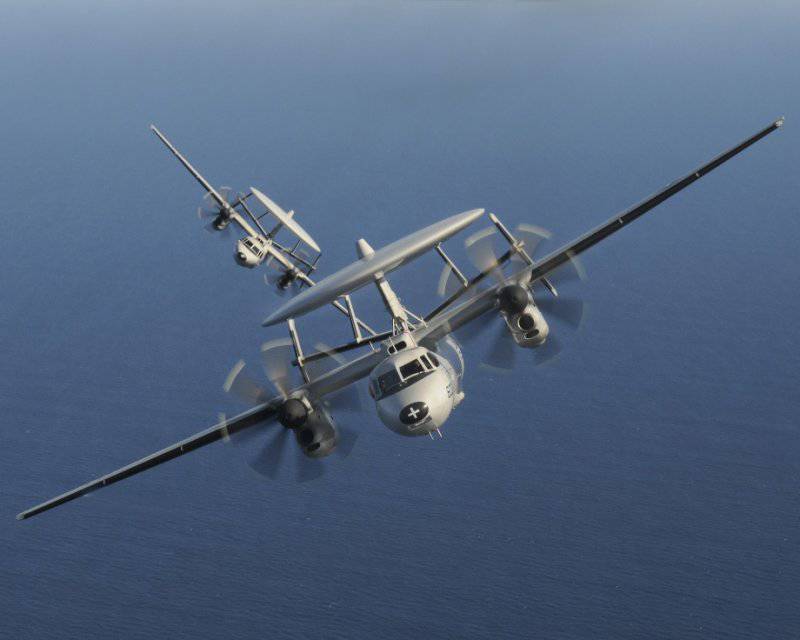
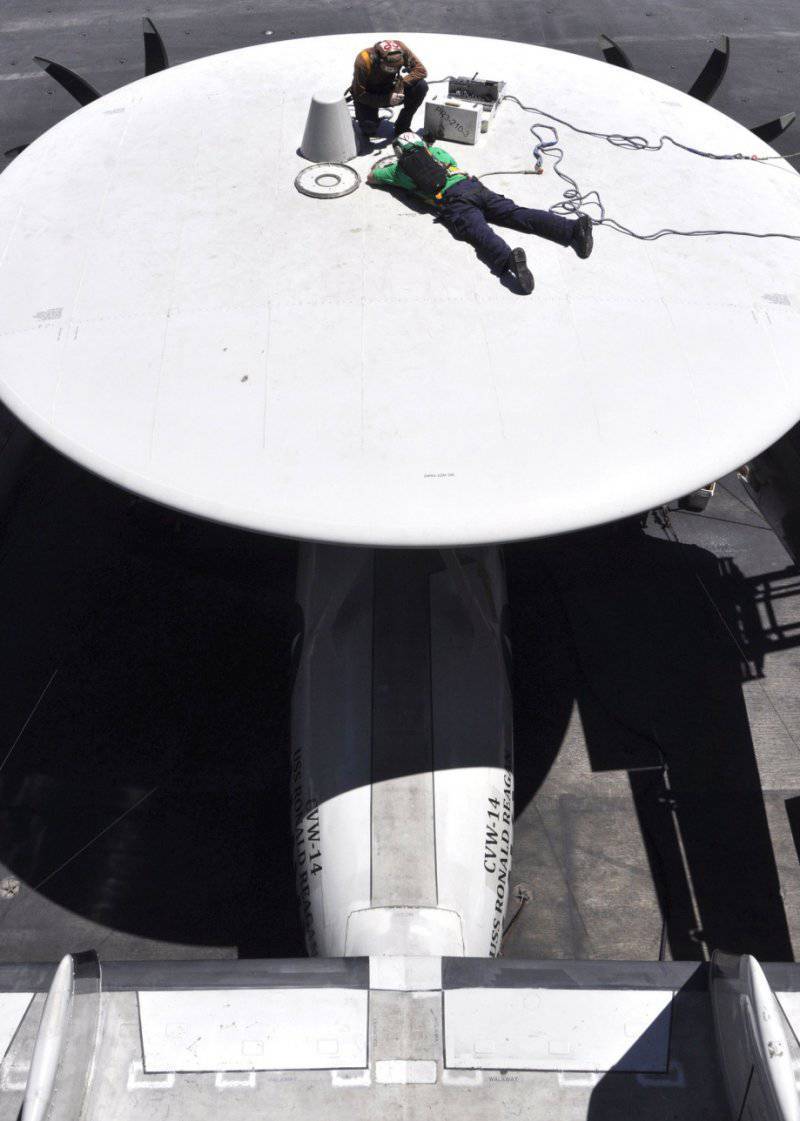
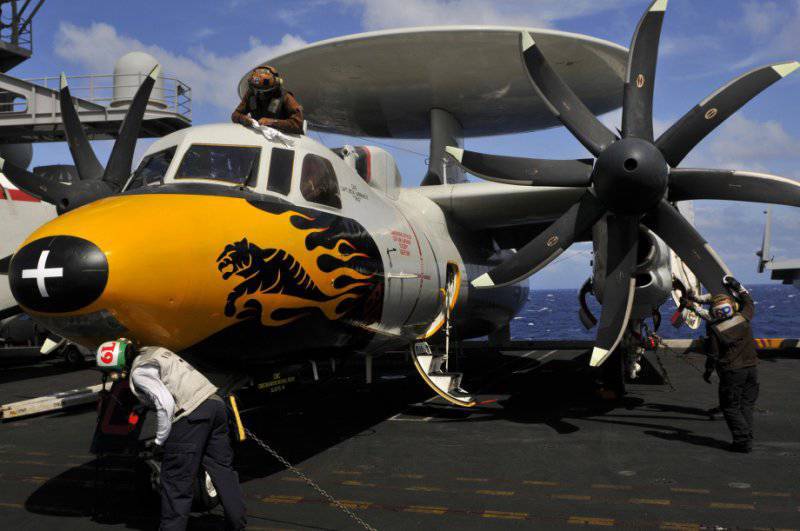
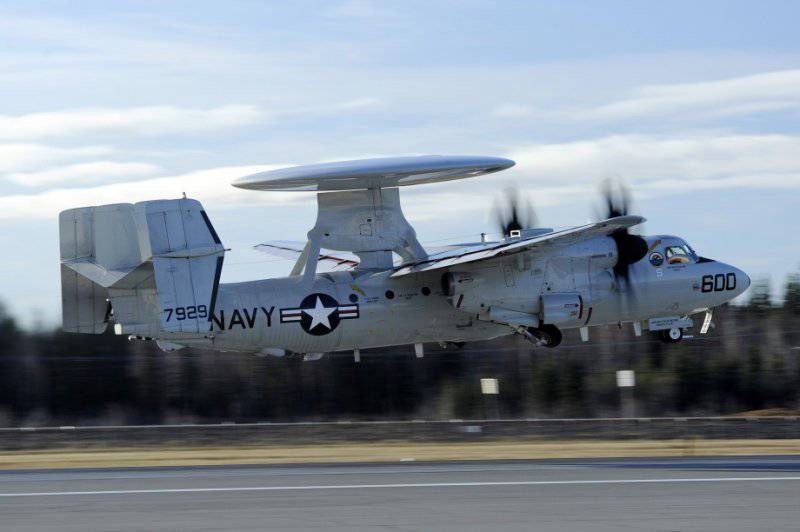
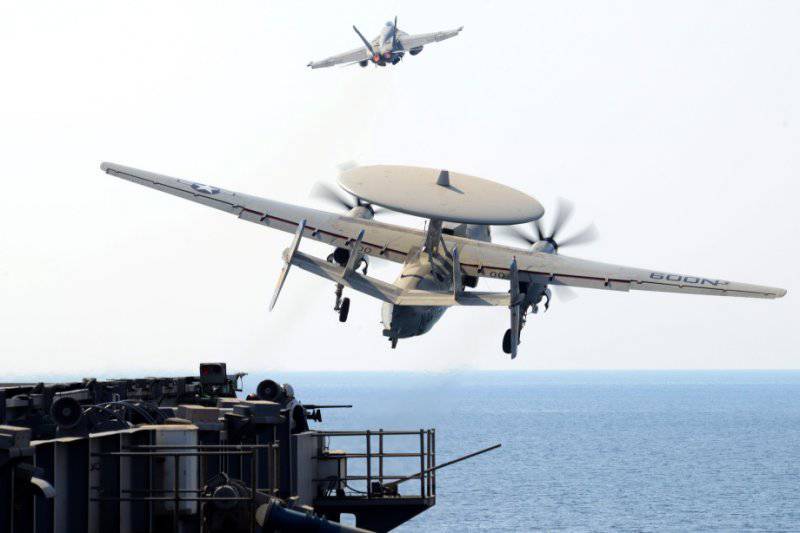
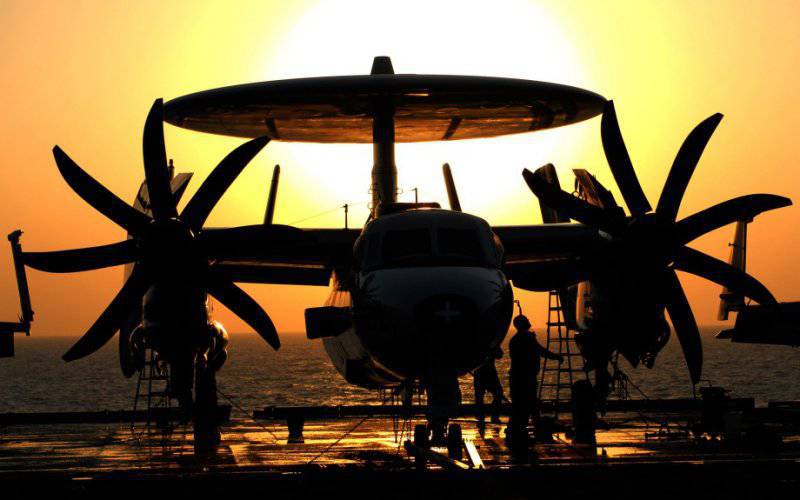
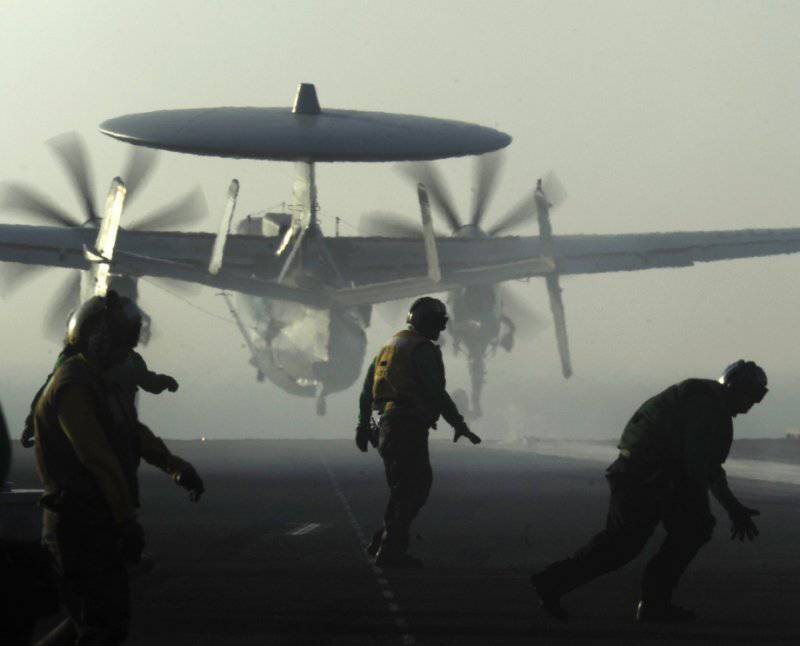
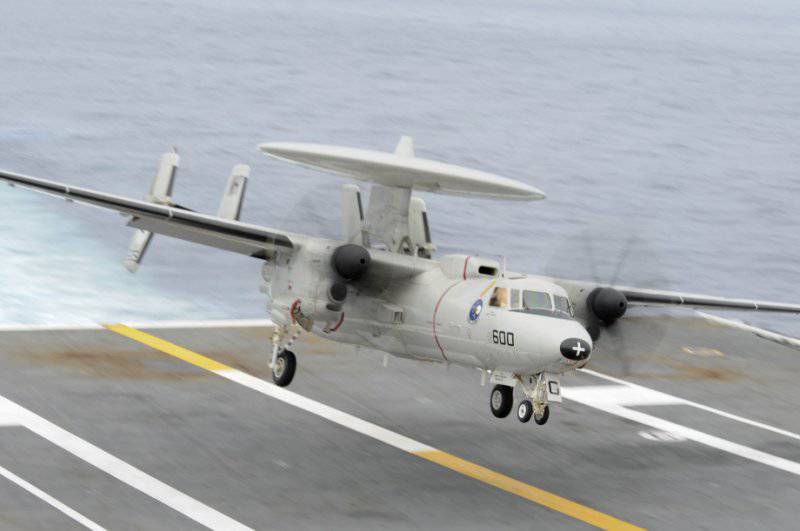
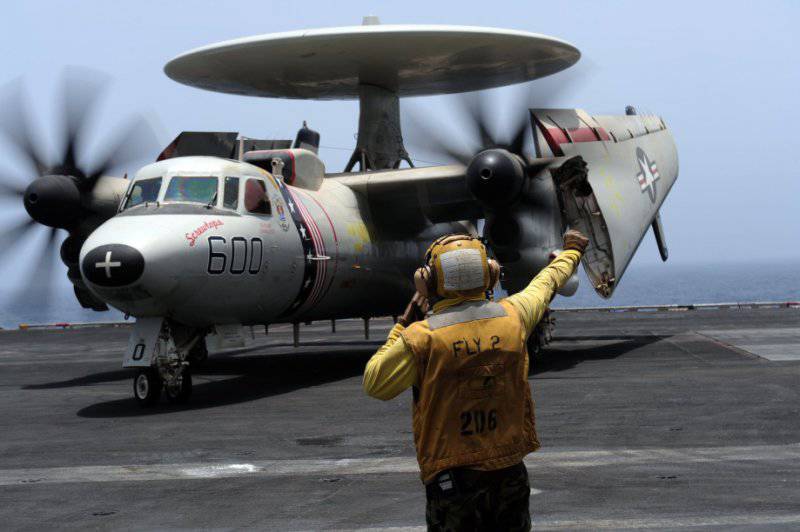
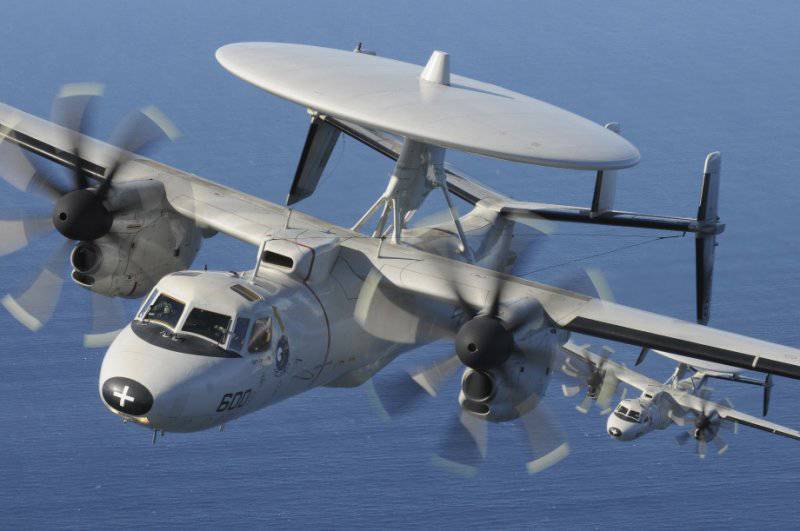
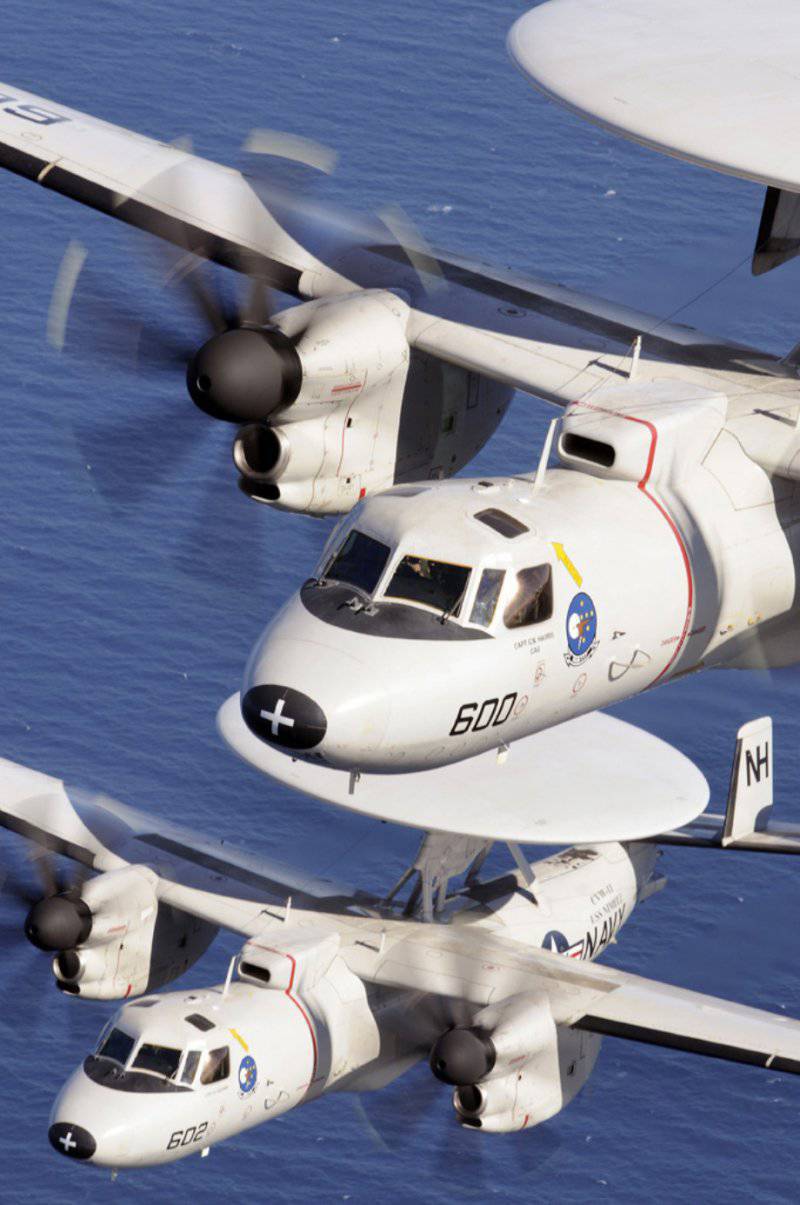
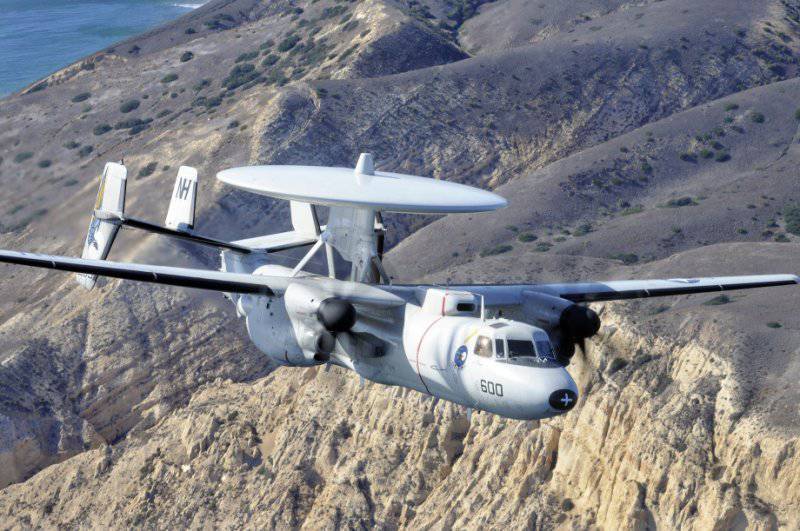
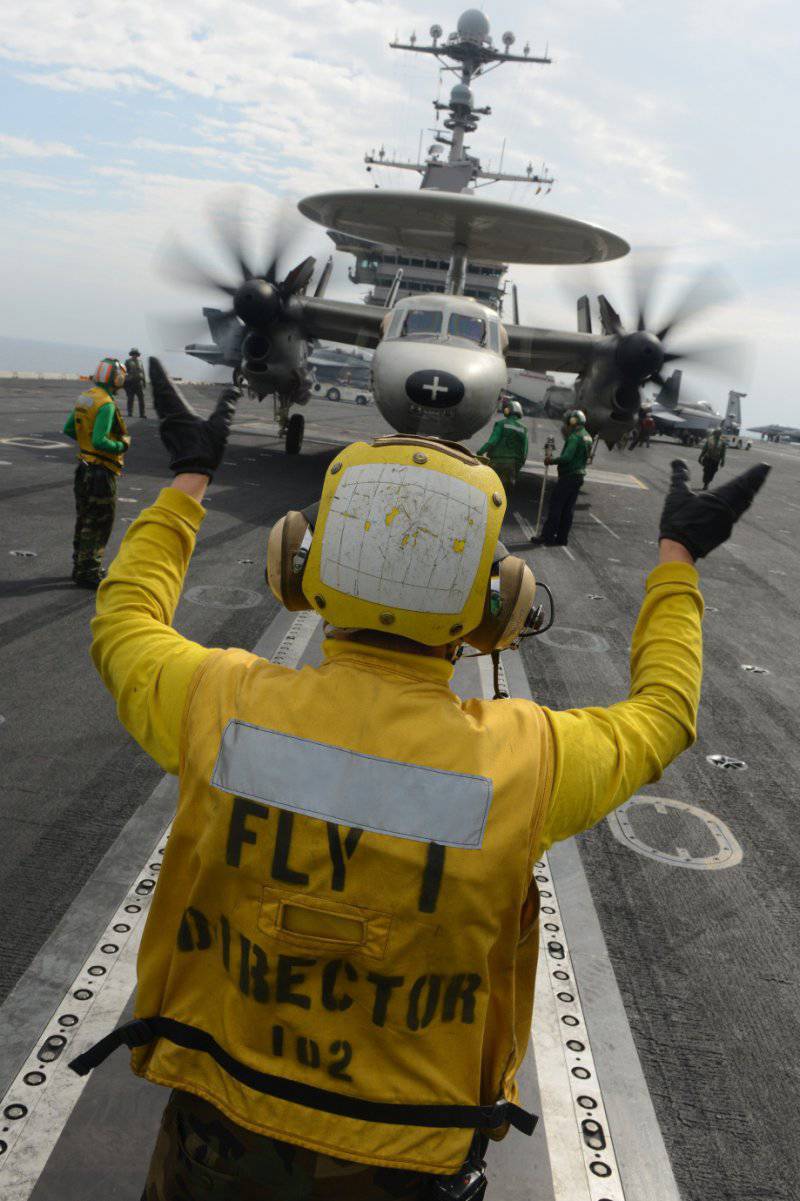
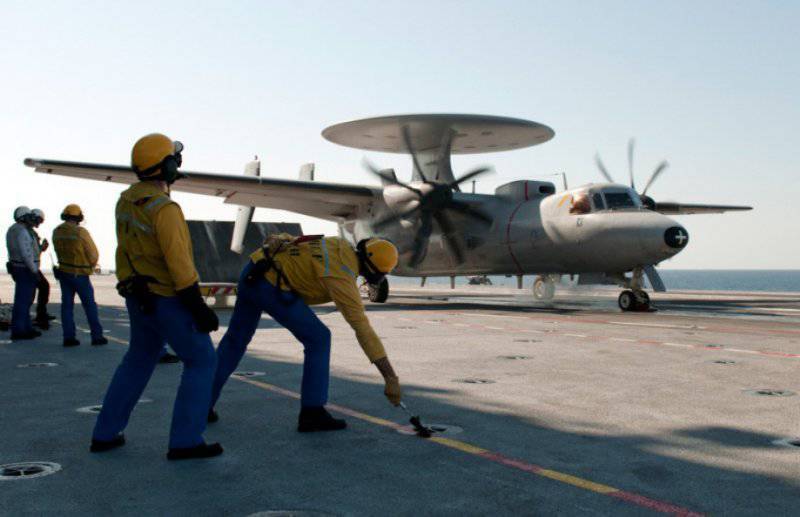
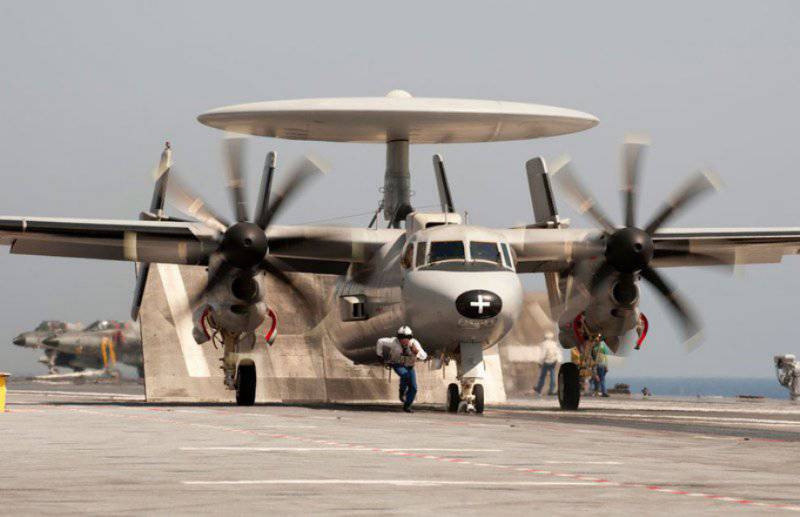
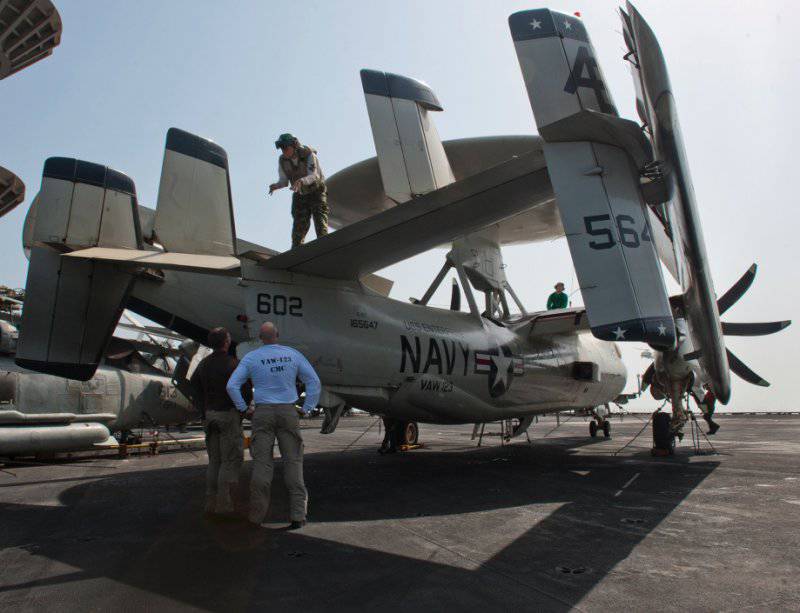
Information